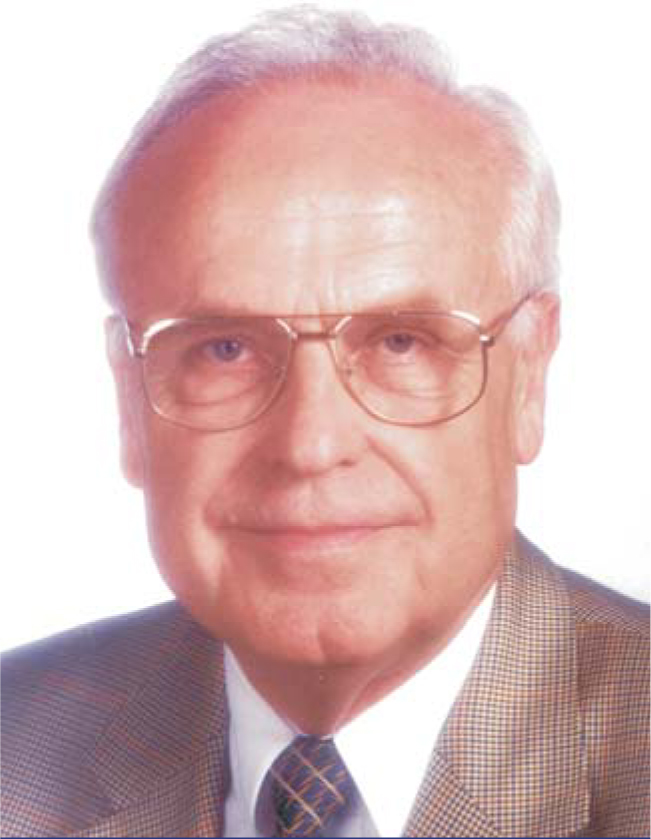Herbert Walther
DOI: 10.1063/1.2754618
Herbert Walther, a leader in the field of laser physics and cofounder and former director of the Max Planck Institute for Quantum Optics in Garching, Germany, died on 22 July 2006 in Munich.
Walther was born on 19 January 1935 in Ludwigshafen, Germany. He studied physics at the University of Heidelberg, where he received his diplom in 1960 and his PhD in 1962 for studies of the nuclear quadrupole moment of manganese-55, with Hans Kopfermann as thesis adviser. He then left for the University of Hanover, where he was a scientific assistant until he earned his habilitation in 1968. After staying there for another year as university docent, he worked in 1969 as guest professor at the Aimé Cotton Laboratory in Orsay, France, and in 1970 as a visiting fellow at JILA in Boulder, Colorado. In 1971 Walther became professor at the University of Bonn and then at the University of Cologne. In 1975 he moved to Munich, where he spent the rest of his career. Until his retirement in 2003, he was a professor of physics at the Ludwig Maximilians University.
In 1976, with Karl-Ludwig Kompa and Sigbert Witkowski, he formed the project group for laser research in the Max Planck Institute for Plasma Physics in Garching. After five years, the project group became an independent institute, named the Max Planck Institute for Quantum Optics. Walther was one of the MPQ’s directors until his retirement in 2003, and he stayed active in research until the last days of his life.
Walther was an innovator in his work on lasers and their applications. In his early work, he contributed to the development of narrowband tunable dye lasers and applied them to studies of fundamental aspects of light–atom interactions, including the observation of the Mollow triplet and antibunching in resonance fluorescence. He constructed pulsed lasers for remote sensing of atmospheric pollution and, in the 1980s, of stratospheric ozone. His research activities covered a broad range of scientific areas, including studies of surface scattering and chemical reactions, molecular spectroscopy, scanning tunneling microscopy, ion trapping, cavity quantum electrodynamics, high-magnetic-field physics and quantum chaos using Rydberg atoms, intense-field studies with femtosecond lasers, optical bistability, and nonlinear optics. But his main interest was fundamental quantum optics with one or a few particles; he worked with both neutral atoms and trapped ions. Among his most important achievements were several seminal studies on atom–photon interactions with the one-atom maser, including the collapse and revival of Rabi oscillations, the discovery of Wigner crystals of trapped ions, and the observation of nonclassical radiation emitted by a single ion. He also worked on many theoretical aspects of quantum optics, often with his longtime friend and colleague Marlan Scully. To work with Walther was to share in his enthusiasm for the world of lasers and their applications.
Among Walther’s many honors were the 1990 Charles Hard Townes Award and the 2003 Frederic Ives Medal from the Optical Society of America, the 1993 King Faisal International Prize for Science, the Franklin Institute’s Albert Michelson Medal in 1993, and the 1998 Stern-Gerlach Medal from the German Physical Society. More than 10 academies were proud to have him as a member, and his scientific work was published in more than 600 papers.
Besides his scientific work, his lasting legacy is the MPQ. By actively recruiting new colleagues as codirectors, he ensured innovation and success for the institute beyond his retirement. The MPQ continues to be one of the world’s premier research centers in quantum optics and attracts visitors from all over the world.
Walther’s activities encompassed much more than research and were truly monumental. He edited journals, including Advances in Atomic, Molecular, and Optical Physics ; he organized conferences, such as the annual Soviet–German Seminar on Laser Spectroscopy, even in the days of the cold war. Important administrative positions he held include as vice president of the Max Planck Society and in the senate of the German Research Foundation; his part was crucial in restructuring science in eastern Germany after reunification. His seemingly endless amounts of energy and optimism helped him to remain active even during his long fight against cancer.
His work will continue and will be multiplied through the excellent group of researchers he educated. The long and impressive list of former graduate students and long-term postdocs who now hold academic positions has more than 20 entries, including Gerd Leuchs, Dieter Meschede, Pierre Meystre, Georg Raithel, Wolfgang Schleich, and the two of us. As a scientist, a teacher, and a person, Walther had a big influence on these and many others.
We will remember Walther for his passion for science, his vision, and his strength. He liked to be in direct control, but he could also delegate and trust. He was a stimulating classroom teacher, an enthusiastic public lecturer, a statesmanlike organizer and presenter at meetings, and a cheerful person in the rustic “witches room” of Ringberg Castle, the Max Planck Society’s conference site. He will always be remembered by his immediate family and by the large family he created in science.

Herbert Walther
MARGOT WALTHER

More about the Authors
Wolfgang Ketterle. 1 Massachusetts Institute of Technology, Cambridge, US .
Gerhard Rempe. 2 Max Planck Institute for Quantum Optics, Garching, Germany .




